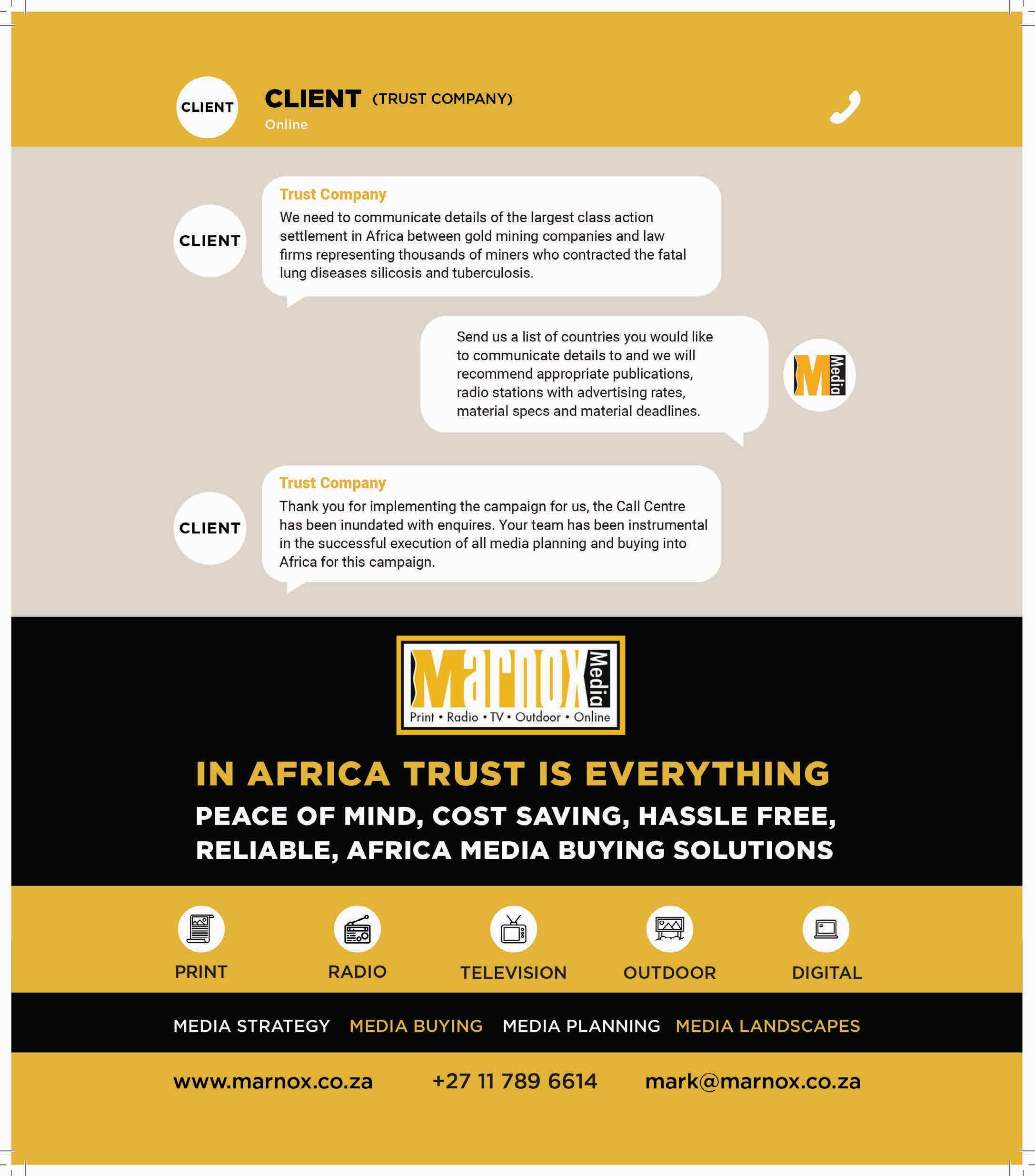
5 minute read
OUT OF HOME: GLOBAL
Bouncing back… A positive forecast for OOH
BEN MILNE takes a look at PSI owner dentsu’s new forecast for ad spend in 2021. The good news is that with the predicted recovery of auto and passenger traffic, the global OOH market is forecast to grow at 14.9%.
Global advertising investment is forecast to grow by 5.8% globally in 2021, according to the fi rst dentsu Ad Spend Report since the global pandemic began.
The report combines data from 59 markets and anticipates that $579-billion will be spent globally, with all regions enjoying positive growth to offset a fall of 8.8% in 2020. Western Europe (7.5%), Asia-Pacifi c (5.9%) and North America (4.0%) will see particularly strong growth fi gures, which will be driven by increasing investment in key countries such as India (10.8%), the United Kingdom (10.4%) and France (8.9%).
Ben Milne
The accelerated shift to digital that advertisers made in response to the significant restrictions placed on people’s lives through lockdowns will also endure. Digital will account for half of all spend for the first time, with social (18.3%), search (11.0%) and video (10.8%) expected to benefit the most.
Meanwhile, the return of major sporting events that were delayed last year such as the Tokyo Olympics and Paralympics, and UEFA European Football Championships will also represent a significant driver of growth. TV is set to benefit in particular from these live events as advertisers look to capitalise on the huge global audiences they draw. However, with continued travel restrictions likely, the growth opportunity that these events normally represent for out of home (OOH) is likely to be lower than previously expected.
Industry sectors that have been impacted the hardest by Covid-19 will also see the biggest bounce-backs. Based on analysis in eight markets, the travel and transport (28.4%), media and entertainment (14.5%), and automotive (13.8%) sectors will all grow significantly after being hit hard by the pandemic. There will also be consistent levels of growth for sectors such as technology (6.0%), finance (5.6%) and telecoms (4.8%), which all proved relatively resilient in 2020.
SO WHAT DOES THIS MEAN FOR OOH?
With restrictions on social activity, OOH media was disproportionately impacted by the crisis. The good news is that with the predicted recovery of auto and passenger traffic, the global OOH market is forecast to grow at 14.9%, the fastest-growing media channel (except cinema). It is expected to recover 50% of the loss suffered through the pandemic by the end of 2021, taking spend in the OOH market to around 88% of the levels seen in 2019 and putting it on course for a full recovery to pre-pandemic levels by the end of 2023.
Looking at regional variations in the forecast, a clear pattern emerges: regions hardest hit in 2020, such as Latin America (growth rate of -42.6% in 2020 vs 2019), are forecast to grow at faster rates in 2021 (51% growth forecast in the case of Latin America) than those who were less impacted like Asia-Pacific (-15.9% in 2020 vs 2019), which is forecast to grow 8.2% in 2021.
A more important signal of recovery is the speed at which each region can get back to pre-pandemic levels of spend. Examining the situation through this lens, we can see that all regions of the world will recover to around 88% of 2019 levels in 2021, with the exception of Europe, which will take longer to recover, reaching 83% of 2019 levels, and Asia-Pacific, the Middle East and Africa, which are all forecast to recover more quickly to more than 90% of 2019 spend levels this year.
A V-SHAPED RECOVERY
Covid-19 has presented our industry and the world at large with unique and unprecedented challenges that will no doubt leave a lasting legacy. It has accelerated the pace of change and the ongoing digital transformation across our industry and society at large.
OOH will experience a relatively V-shaped recovery, which serves to demonstrate the strong fundamentals and resilience of the medium. Growth is forecast to be driven by digital OOH, which continues to evolve quickly, both in terms of offer (including programmatic capabilities) and demand (advertisers’ use of this medium).
While a return to growth will be welcomed all round, the road to recovery for marketers should be supported by investments in ways that will put consumer intelligence at the heart of their business strategies. We know from our own CMO survey that understanding consumer behaviour in a post-pandemic world is the biggest challenge marketers face.
For OOH to capture the spend growth forecast fully it is imperative that the sector continues to invest in understanding consumers’ changing relationships with the medium. What will be the impact of new travel and work patterns that emerge in 2021? What is the balance between urban and sub-urban impressions and impact in a world where people live more locally? Which of the observed changes are temporary and which will persist?
Helping brands and marketers navigate the impact of these changes to OOH, along with giving them confidence in audiences returning to our medium (supported by data), will ensure our channel not only remains relevant in 2021 and beyond, but is also better positioned than before.
Full dentsu Ad Spend Report January 2021.
Ben Milne is managing director of Posterscope’s international division, PSI. He has worked for Posterscope for the last 20 years in various planning, strategy, innovation and leadership roles across the UK, Russia, China and recently Japan, where working alongside the dentsu Inc. OOH division he established Posterscope in Japan. The World Out of Home Organization is the only global Out of Home Association, working to promote and improve the OOH industry on behalf of its members.











